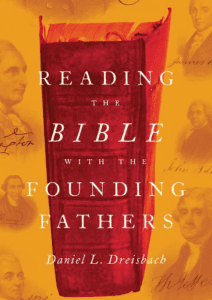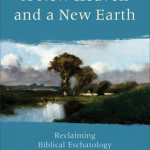 I picked up a fascinating book a few weeks ago – Genesis, Exodus, Leviticus, Numbers, Deuteronomy (Zondervan Illustrated Bible Backgrounds Commentary) . This is the first of a five volume set brought to my attention through a post on Pete Enns’s blog with, as usual for him, a nice pithy title Learn about the Cultural Background to the Bible (with pictures and everything). I’ve been dipping into the background material for Genesis and Leviticus of late, and fear that the other four volumes on the Old Testament will soon join my library as well to suck up even more of my time. The books are moderately expensive, but Zondervan is beginning to release commentaries on individual books in paperback. John Walton’s background commentary on Genesis was released last month.
I picked up a fascinating book a few weeks ago – Genesis, Exodus, Leviticus, Numbers, Deuteronomy (Zondervan Illustrated Bible Backgrounds Commentary) . This is the first of a five volume set brought to my attention through a post on Pete Enns’s blog with, as usual for him, a nice pithy title Learn about the Cultural Background to the Bible (with pictures and everything). I’ve been dipping into the background material for Genesis and Leviticus of late, and fear that the other four volumes on the Old Testament will soon join my library as well to suck up even more of my time. The books are moderately expensive, but Zondervan is beginning to release commentaries on individual books in paperback. John Walton’s background commentary on Genesis was released last month.
Walton has a nice discussion of background relevant to creation in Genesis 1 and the Garden in Genesis 2. Much of this material puts a new perspective on the interpretation of Genesis 1-3. The cultural context embedded in the text we have is foreign to 21st century experience. Consider, for example, Genesis 2:8-10 (ESV).
And the Lord God planted a garden in Eden, in the east, and there he put the man whom he had formed. And out of the ground the Lord God made to spring up every tree that is pleasant to the sight and good for food. The tree of life was in the midst of the garden, and the tree of the knowledge of good and evil. A river flowed out of Eden to water the garden, and there it divided and became four rivers.
Comparative studies suggest that the Hebrew word “Eden” links to an Aramaic word that means “to enrich, make abundant.” The garden is well watered and beautiful, adjacent to Eden from where the water flows.
The garden adjoins God’s residence in the same way that a garden of a palace adjoins the palace. Eden is the source of the waters and the residence of God. The text describes a situation that was well known in the ancient world: a sacred spot featuring a spring with an adjoining well-watered park, stocked with specimens of trees and animals. (p. 28)
It is interesting that Sennacherib (See 2 Kings 19, 2 Chron. 32 and Isaiah 36-37) constructed well watered gardens of exotic trees and plants in Nineveh and elsewhere (Encylopedia Britannica). Walton has a featured discussion on Garden Parks in the Ancient Near East.
The word “garden” here should not make us think of vegetables or even necessarily flowers. Public gardens or a “country garden” convey the idea more accurately as indicating a park with careful landscaping, pools, watercourses and paths winding among fruit trees and shade trees. Such arboretums, sometimes even containing animals of various sorts, were a common feature of palace complexes in the ancient world.
…
Temple complexes also sometimes featured gardens that symbolized the fertility provided for by the deity. (p. 29)
An image of an ancient garden from the North Palace of Ashurbanipal is included in the book and can be seen online from the British Museum. Walton notes references to such gardens dating from ca. 1100 BC to ca. 700 BC. The tree of life also has counterparts in Ancient Near Eastern culture from the the Gilgamesh epic, the Story of Adapa, and from art work and cylinder seals (although Walton is cautious in interpreting some of the images).
In Genesis 3 Adam and Eve are banished from the Garden, a place watered through God’s abundance, next to the residence of God. They were in a sacred space where, as N.T. Wright often says, Gods space and Man’s space interlocked and interacted. They listened to the serpent and moved from a position of communion with God, provided for from God’s abundance to a place of toil and trial, death and decay.
 The serpent is an interesting image as well. Walton points out (pp. 33-34) that a snake steals a magic plant that will rejuvenate him from Gilgamesh in the Gilgamesh Epic. In the Story of Adapa a serpent is “the guardian of the demons who live in the netherworld.” “In Egypt, the serpent was associated with both death and wisdom.” And … “Even when not related to a god, the serpent represented wisdom (occult), fertility, health, chaos, and immortality, and was often worshiped. The snake god Apophis was considered the enemy of order.“
The serpent is an interesting image as well. Walton points out (pp. 33-34) that a snake steals a magic plant that will rejuvenate him from Gilgamesh in the Gilgamesh Epic. In the Story of Adapa a serpent is “the guardian of the demons who live in the netherworld.” “In Egypt, the serpent was associated with both death and wisdom.” And … “Even when not related to a god, the serpent represented wisdom (occult), fertility, health, chaos, and immortality, and was often worshiped. The snake god Apophis was considered the enemy of order.“
The story told in Genesis 2-3 uses images well understood by the people of the day, the Ancient Near Eastern Israelite audience for whom and to whom the book was initially written. Books like this well illustrated background commentary help us to understand the context and thus to better understand the intent and the meaning.
Does this context shed light on Genesis 2-3?
How does it change your understanding of the message that the original author intended?
Does it make sense for us to refer back to a literal Eden and a crafty snake?
Is it possible, more likely even, that a divine message is conveyed in a context and form familiar to the original audience?
If you wish to contact me directly you may do so at rjs4mail [at] att.net.
If interested you can subscribe to a full text feed of my posts at Musings on Science and Theology.











